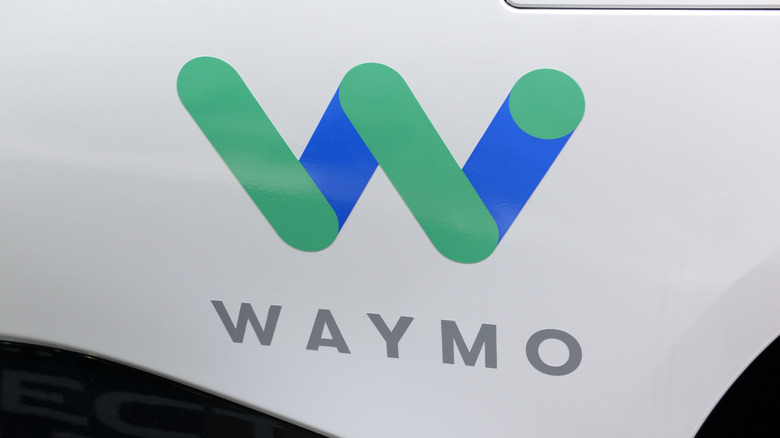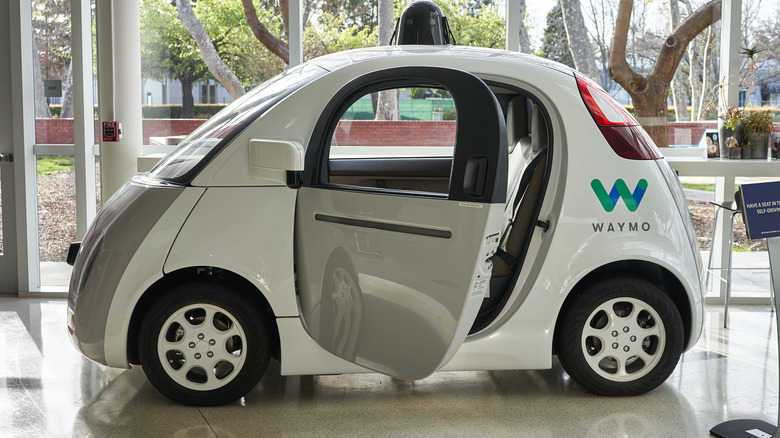Waymo's First Fully Autonomous Taxi Replaces Steering Wheel With Screen
Waymo has had cars equipped with self-driving technology on the road for years, but those cars don't represent the company's final form. Models from Chrysler and Jaguar are among the vehicles retrofitted with autonomous systems, and they can still be driven by humans — that is to say, they have a steering wheel, pedals, and other things that a self-driving vehicle doesn't need to operate itself. It's only a matter of time before fully autonomous cars become a common sight on roads, and they will feature very different interiors.
Waymo has given the public a look at one example of this type of car. A prototype taxi made in partnership with Geely Group is the subject of a new video shared on Twitter, which shows multiple seats equipped with personal displays — and, most notably, a complete lack of common vehicle equipment like a steering wheel. Waymo says this is a "riders-first" design.
The prototype vehicle doesn't need humans, for the most part
According to Waymo, the taxi we see in the tweet is its latest vehicle platform — one that was, in this case, designed entirely with ride-hailing in mind. In the future — and in limited cases, right now — anyone will be able to pull out their smartphone and order a self-driving car, which will wheel itself directly to the customer and then take them wherever they'd like to go. That has the potential to not only cut down on accidents, as these cars will be able to talk with each other, but could also revolutionize transportation for the elderly, individuals who can't drive, and others who may otherwise face limited independence.
All electric.
Riders-first.Â
Designed specifically for fully autonomous ride-hailing.Take a peek at our new mobility platform in partnership with @GeelyGroupâ€"available in the years to come. 🤖🚘 pic.twitter.com/AJiRtPzytP
— Waymo (@Waymo) November 17, 2022
The idea of designing these vehicles with play and productivity in mind isn't new — in fact, if you expand your view broadly enough, you could argue that infotainment displays on airplanes and built-in TVs in old-school minivans were the first examples of evolving car interiors to meet not only customer needs but also the nature of the transportation method itself. Some concepts have featured windows that blur the exterior world and replace it with video; others have integrated gaming systems, and some designs even include desks for passengers who want to get some work while commuting.
Waymo's take on driverless transportation is far more practical: each seat appears to have its own display, perhaps with the exception of the two front seats, which seem to share a display. There aren't any details provided on the prototype such as what kind of connectivity may be offered, but that's not the point: the prototype will no doubt change before its final form, but regardless of design, it's proof that we're closer than ever to smart cars taking over streets.

